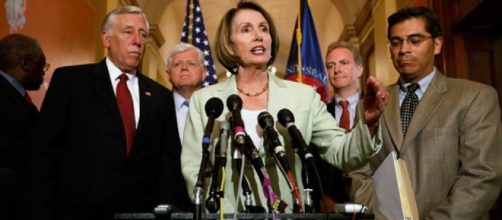On November 9th the democrats were a Party in depression having lost a seemingly ironclad presidential campaign and failed to achieve at least one House majority that seemed on the cards according to most polls. In the nearly six months since then the political stage has changed in a manner that few would have expected in the aftermath of elections.
Transition
The transition period leading up to Donald Trump’s Inauguration gave signs of the turmoil that have dogged the new Administration. Then rumours of possible Russian interference in the election campaign seemed more the beginning of a political thriller rather than a matter for serious investigations.
During that period the Democrats had to rethink their tactics. The seemingly solid Republican majority in Congress meant that the Party’s only true battlefield would be the Senate where the one seat Republican majority gave hope for some victories to raise the profile of the Party as it rebuilt for what seemed an uncertain future.
The loss by Hillary Clinton also meant that the Party was in need of a leader to guide it towards the 2018 midterms that gave few hopes for victory. Then the confirmation hearings and other matters began.
The confirmation hearings, particularly that of the controversial Jeff Sessions for Attorney General, gave the Democrats a chance to regroup and to fight back against what was obviously an unusual and controversial White House.
The challenge to the oval office was best illustrated during the confirmation debate when Elizabeth Warren was banned from speaking when she attempted to read a letter by Coretta Scott King about the soon to be confirmed Attorney General.
The use of a little known regulation only raised the profile of the letter as it was placed on Warren’s website and then distributed widely on the social media. This incident raised the Senator’s profile as a future leader for the Party and also showed the public that the Republicans had little interest in working together with the Democrats.
Shackles
In effect the incident with the letter was what unshackled the Democrats into increasing aggressiveness in their tactics in both Houses.
The news of investigations into possible Russian hacking of the presidential campaign then began to give the party ammunition to use in the Houses and also publicly.
While the first months of the legislative process began predictably the wave of executive orders from the Oval Office began a series of protests against the Mexican border wall and particularly against the repeal and replacement of the ACA.
In effect the midterms that seemed so difficult only a few weeks ago began to become winnable for the Democrats and particularly in light of the now publicly revealed Republican divisions in Congress where Paul Ryan’s proposed bill to replace the ACA which was withdrawn to avoid an embarrassing defeat on the floor.
Tactics
The GOP divisions and the increasing revelations of Russian interference in the election and the confirmation by FBI Director James Comey that investigations are ongoing of collusion between the Trump team and Russian agents during the campaign and the transition period have charged up November’s defeated Party.
Now the Democrats have the opportunity to go on the charge against the Republicans in the House and in particular against the Oval Office itself as news comes out of developments in the investigations.
House Democrat Leader Nancy Pelosi and Senate Leader Chuck Schumer now have the opportunity to seriously block legislation by the Oval Office as the GOP politicians become more worried about their electoral chances in next year’s midterms.
They will be unwillingly aided by the now open warfare between Donald Trump and the more conservative factions in the GOP beginning with the Freedom Caucus which will give impetus to the Democrat charge.
The Senate and Congress have now become battlefields that were unimaginable in November and the midterms may well change the future of the Oval Office even more.

